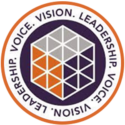Heroin Addiction Treatment Center in Idaho
In the context of substances that are abused and the social level that they are associated with, heroin is popularly believed to be the drug of choice for the lower-income groups of society, because it is a common street drug and, compared to other illicit substances, it is cheaper. According to The Substance Abuse and Mental Health Services Administration (SAMHSA), in the past couple of decades, the percentage of heroin users dealing with dependence issues doubled.
Heroin is arguably the most preferred recreational drug due to the euphoria that comes with the high. This substance also has a higher rate of dependence development compared to other opioids. In most cases, the only way to beat the addiction is by admitting to a heroin addiction treatment center.
Unlike other opioids, heroin is currently not accepted as being medically useful in the United States. It is, however, used in other countries in situations where potent pain medication is needed. At Eagle Creek Ranch Recovery, we understand the seriousness and dangers of heroin abuse. This is why we offer professional treatment services.
Eagle Creek Ranch Recovery is a prominent men’s rehabilitation center located in Nampa, Idaho, that specializes in treating individuals suffering from addiction to drugs and alcohol, including heroin.
When it comes to drug abuse, we typically recommend our clients to begin with detox. Detoxification aids in managing the acute heroin withdrawal symptoms that occur when a person stops taking the drug. Following a successful detox, we then incorporate adventure therapies rooted deep in nature’s solace. This implies the use of outdoor activities as a form of experiential therapy, which can help individuals develop coping mechanisms, improve problem-solving skills, and foster a sense of self-worth and accomplishment.
At Eagle Creek Ranch Recovery, we aim to equip each individual with life skills pertinent both inside and outside of sobriety. This holistic and long-term approach to recovery indicates that their programs are designed not only to treat addiction but also to assist individuals in rebuilding their lives and maintaining sobriety after treatment.
Medications such as methadone, buprenorphine, and naltrexone are often used to help curb the massive urges a person will experience during detox and even into rehab. These medications alternatively work by either dampening the high that people feel when taking heroin or by blocking the effects of heroin in the body, thus eliminating the ability of a person to feel high when using heroin.
Medication-assisted treatment (MAT) is an effective approach used in the process of heroin detox. It involves the use of FDA-approved medications (for preventing withdrawal symptoms), in combination with counseling and behavioral therapies, to provide a “whole-patient” approach to treating substance use disorders. Here’s how it works:
- Easing Withdrawal Symptoms:
Heroin withdrawal can cause intense physical and psychological symptoms such as muscle aches, anxiety, and extreme cravings. Medications like buprenorphine and methadone are often used in MAT to help alleviate these withdrawal symptoms. For example, the FDA approved lofexidine, a non-opioid medicine designed to reduce opioid withdrawal symptoms.
- Reducing Cravings:
Medications used in MAT can also help to reduce cravings for heroin. Methadone and buprenorphine work by binding to the same opioid receptors in the brain that heroin does, which can help to lessen cravings and withdrawal symptoms.
- Preventing Relapse:
Naltrexone, another medication used in MAT, works differently than methadone and buprenorphine. Instead of activating opioid receptors, naltrexone blocks them. This prevents heroin from having any effect, making it less likely that a person will relapse.
- Supporting Long-Term Recovery:
MAT is not just about managing withdrawal and cravings. It also includes behavioral therapies and counseling, which can help individuals address the underlying issues associated with their addiction and learn new coping strategies.
It’s important to note that while MAT can significantly improve the chances of successful recovery, it’s most effective when part of a comprehensive treatment plan tailored to the individual’s specific needs.
The intense cravings felt by people who are in heroin withdrawal, coupled with some debilitating symptoms, often require medical care. This is why inpatient rehab is always a part of the treatment of someone who is trying to kick a heroin habit. In some cases, patients undergoing heroin rehab need monitoring as they might develop complications due to a co-occurring medical condition.
Men’s inpatient rehab for heroin addiction provides a structured and supportive environment that is crucial for recovery. Our programs employ a comprehensive approach that combines various evidence-based treatments such as holistic treatments, cognitive-behavioral therapy (CBT), and contingency management interventions.
Inpatient rehab allows individuals to connect with others who are going through similar experiences. This peer support can play a vital role in recovery by fostering a sense of community and shared understanding.
Dual diagnosis treatment is a comprehensive approach to addiction recovery that addresses both substance use disorders and co-occurring mental health issues. At Eagle Creek Ranch Recovery Center, dual diagnosis treatment may be especially beneficial for individuals recovering from heroin addiction.
Dual diagnosis treatment provides integrated care for both addiction and mental health conditions. This means that individuals receive treatment for their heroin addiction and any mental health issues simultaneously, which can lead to better outcomes.
Heroin is known to induce sudden and massive personality and behavioral changes. These changes could require a more intensive and comprehensive approach to correct, as most of these changes are centered around an environment of drug use. Mental health is a major factor when it comes to addiction treatment and recovery. Treatment for heroin addiction is no different. At Eagle Creek Range, we value our mental health programs, and we pride ourselves on our ability to treat men.
Opioid use disorder is an extremely difficult addiction to beat alone. This is why we provide physical and emotional support through our addiction therapy services.
Aftercare is a crucial component of the recovery process, particularly after intensive treatment for heroin addiction. It provides ongoing support to individuals as they transition back into their everyday lives post-treatment.
- Continued Counseling and Therapy:
Aftercare often includes continued access to individual or group therapy sessions. These provide a safe space for individuals to discuss challenges, celebrate successes, and continue building coping strategies.
- Support Groups:
Many aftercare programs encourage participation in support groups, such as Narcotics Anonymous or other 12-step programs. These offer peer support and shared experiences, which can be instrumental in maintaining sobriety.
- Education and Skills Training:
Aftercare may also involve ongoing education about addiction and relapse prevention strategies. Life skills training can help individuals manage stress, improve communication, and navigate potential triggers in their environment.
Signs and Symptoms of Heroin Addiction
It is important to remember that heroin, like many other opioids, directly affects the central nervous system. As such, it could practically affect most systems and processes of the body. This is why heroin addiction is quite hard to hide, as the manifestations of use come in physical and mental forms.

- Falling asleep suddenly
- Slowed breathing
- Dry mouth
- Flushed skin
- Tendency to sleep frequently
- Changes in appetite
- Dramatic weight loss
- Constant runny nose
- Itches in various places in the body
- Nausea
- Vomiting
- Marked physical deterioration
- Unusual body odor
- Tremors and twitches
- Slurred speech
- Impaired coordination
- Lethargy
- Significantly impaired cognitive function
- Inability to think clearly
- Impaired decision-making skills
- Disorientation
- Decrease or lack of self-control
- Inability to concentrate
- Inability to pay attention
- Impairment of short-term memory
- Sudden personality changes
- Sudden mood swings
- Angry outbursts
- Irritability
- Lack of motivation
- Paranoia
- Fearfulness
- Anxiety
- Depression
Perhaps the most notable symptom of heroin addiction that people should pay more attention to is the fact that it leads to death via overdose. Heroin is one substance where crossing the line into overdose territory is quite easy as the person taking heroin will not have any sense of when to stop, and of how much they have already taken.
- Cold, clammy skin
- Cyanosis (bluish coloring to the lips and fingernails)
- Stomach spasms
- Severe constipation
- Pinpoint pupils
- Discoloration of tongue
- Delirium
- Severe disorientation
- Severe drowsiness
- Persistent muscle spasms
- Extreme hypotension (weak pulse)
- Slow, shallow, or labored breathing
- Inability to breathe
- Coma
In many cases, what follows the coma is death by organ failure, as the body slowly shuts down from the severe damage done by heroin.
Contact Eagle Creek Ranch
Recovery Today!
Why Wait? Find The Help You Need By Reaching Out To Us Today! Our Admissions Team Is Standing By.
Heroin Withdrawal Symptoms

There are many cases of extreme difficulty when detoxing a person heavily addicted to heroin because of severely compromised cognitive function. Some people don’t simply understand what is happening anymore, and all they could ever think of or want is to find heroin. Even as cognitive function slowly returns, the intense urges and realization of not being able to use heroin often lead to confrontations, outbursts, and violent reactions.
- Intense cravings and urges
- Profuse sweating
- Nausea
- Vomiting
- Severe muscle aches and pains
- Cramps
- Lethargy
- Extreme pain in muscles and bones
- Insomnia
- Cold sweats
- Runny nose
- Fever
- Diarrhea
- Tachycardia (elevated heart rate)
- Hyperventilation
- Hypertension
- Elevated body temperature
- Dilated pupils
- Anxiety
- Depression
- Disruption of sleep patterns
- Persistent feelings of fatigue
- Dysphoria (state of generalized unhappiness, restlessness, dissatisfaction, or frustration)
- Irritability
- Impaired memory
- Anhedonia (inability to feel pleasure)
It is also worth mentioning that death is also a possibility when one or more of the withdrawal symptoms happen to cause a complication in the person.
How Does Heroin Affect the Brain and Body?
The human body has a unique way of dealing with pain. It can naturally produce opioid chemicals as a response to the sensation of pain. These opioid chemicals help with regulating the pain, hormone release to deal with whatever injury or trauma caused the pain, and also chemicals that give a sense of well-being or euphoria. The effects of these opioid chemicals, however, don’t last that long. The shortened effect is primarily the reason for the creation of the opioids used to deal with pain today.
The problem with substance abuse, however, is that it creates a chemical imbalance in the body. The body will detect the presence of the opioids taken and will, therefore no longer release the ones that are produced by the body. This process is believed to be what causes the addiction to opioids. Add to that the fact that the sensations produced by opioids can now be felt even without having to incur injury or trauma, particularly the euphoria, and it is no wonder so many are addicted to the high received from substances like heroin.
Perhaps the bigger problem with heroin use is that it has been clinically proven actually to cause brain damage. This brain damage occurs in several ways:
The body will typically detect the presence of specific chemicals that are present in the body at any given time. These include both beneficial chemicals and even toxic ones. As such, for chemicals that are used to deal with pain like opioids, the body and brain will detect their presence in the body and, will no longer produce the safer, albeit shorter-acting opioid naturally produced by the body. As such, the body becomes more dependent on the opioids not produced by the body, and this is how addiction is created.
Oxygen is a vital necessity for the human body to live. Not having any oxygen in the blood, even for a very short time, is already enough to cause damage. Heroin is also known to affect the breathing process, depressing it to the point where the body no longer receives sufficient oxygen. Low oxygen intake also leads to brain damage as the brain requires constant oxygenated blood. This condition is known as hypoxia, where the level of oxygen in the blood is lower than what is required for proper function.
There are studies done on the effects of heroin, and one of the more disturbing findings is that heroin could cause low-grade inflammation in the brain. This is believed to cause people to manifest symptoms associated with dementia or Alzheimer’s disease. The most pronounced manifestation of this condition as induced by heroin addiction is impairment or even loss of memory, as well as impairment of some cognitive functions, such as the inability to recognize people, places, and some concepts.
Let Eagle Creek Ranch Recovery Help You Today
Past mistakes should never define a person’s present or future. This is something we firmly believe in here at Eagle Creek Ranch Recovery. We have helped countless people overcome their substance dependency and rise above the stigma of their past mistakes, to find a better life, with a clearer purpose. We believe in recovery, and we believe that everyone deserves it. Talk to us now about heroin treatment.


Clinical Director
Kendall Maloof is the clinical director at Eagle Creek Ranch Recovery. She is a licensed marriage and family therapist and has held multiple leadership roles before settling here at Eagle Creek Ranch Recovery. Kendall received her master’s degree in marriage and family therapy from the Chicago School of Professional Psychology in 2016. Her career in mental and behavioral health began in 2014 when she took up internships in both the nonprofit and for profit sectors. She interned at multiple reputable companies, such as The Living Success Center and 449 Recovery in California.
In 2019, Kendall became the clinical director of Sunsets Recovery for Woman, a dual diagnosis program in southern California. Kendall is a natural leader. She has an incredible ability to problem solve and stay calm in any situation. Kendall never fails to show up when she is needed, and her calm demeanor makes her team and clients feel at ease. Eagle Creek Ranch Recovery is proud to have Kendall as our clinical director.


